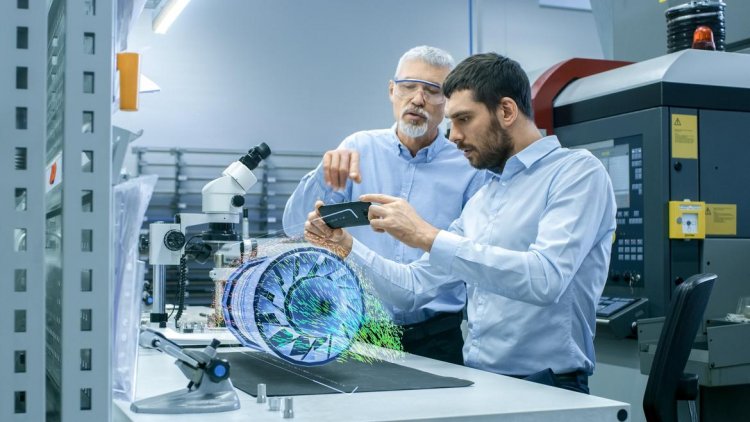Augmented Reality Leads Innovation in EdTech
The current COVID-19 scenario has accelerated digitalization in the education sector, and innovations in technology are changing education methods.

The current COVID-19 scenario has accelerated digitalization in the education sector, and innovations in technology are changing education methods. Industry research expects EdTech to reach $680.1 billion in volume by 2027 and grow 17.9% annually. Augmented reality is the most talked about and most important trend in EdTech field recently. The value of AR in EdTech is expected to exceed $5.3 billion by 2023, offering a pool of opportunities for educational technology startups, businesses and educational institutions.
EdTech companies are digitizing K-12, college, professional certifications, and competitive learning. They recognized the importance of AR/VR at Edtech as a value-added service that increases participation in internet-based education. AR/VR allows students to visualize, explore and easily connect complex concepts in a distraction-free real-world environment. AR/VR can “democratize” education and provide a personalized, tailored learning experience for students.
Here are some advantages of using AR/VR at EdTech;
- Increases effective learning and retention: Learning with simulations and full immersion will enhance the learning process and make it easier for students to connect multiple complex concepts.
- Enhanced student engagement: Gamified and interactive experience can make learning fun and effortless while keeping the learner always engaged. Experiential and experiential learning: Visualize 3D models. applying theories in precise simulations can help the concept be easily learned. In addition, students can design different scenarios and virtually check the practicality of the theory.
- Personalized learning: Based on learning and behavioral patterns, AR/VR can personalize learning and enhance students' skills.
Content remains an important and vital parameter that distinguishes EdTech platforms. With AR/VR, the right content can be delivered through any channel that increases the value of EdTech platforms. Interaction is the cornerstone of AR/VR at EdTech, and the integration of AI can offer endless possibilities, including behavior monitoring. Bringing AR to students can make learning more accessible, convenient and remote.
According to the Pew Research Center, over 90% of teens today have access to smartphones.
No special equipment is required to use AR, and students can easily access this technology using a smartphone.
EdTech will witness increased adoption and interest in AR/VR as the next generation of students experiment with devices with curiosity and open-mindedness. Students using AR/VR can fully understand and process information without too much cognitive load. Using VR technology, virtual labs for students can be set up with minimal upfront investment.
Despite the advantages, there are some challenges to AR/VR adoption on the EdTech platform. The biggest obstacle is the lack of knowledge about AR/VR in the education ecosystem. As a new technology, AR/VR requires acceptance from students, parents and teachers.
- Differences in Learning Capabilities: Although pointer-based virtual learning can guide students, not everyone may be open to it and appropriate training may be required prior to this.
- Lack of Technical Knowledge: EdTech platforms should consider the tech illiterate population/parents before making widespread use of AR/VR services.
- Insufficient Content and Content Creation: Most content currently available is not deep enough. Also, creating AR/VR content can take time as platforms need to have relevant content for all types of learners and use cases.
- Lack of Education: Only open-minded instructors can adapt to this new technology and teacher training is very important in the use of AR/VR.
We think EdTech platforms using AR/VR can redefine the future of learning. Students seek a personalized, interactive, authentic and immersive learning experience. We believe that AR/VR can fill the gaps in e-learning in integration with artificial intelligence and collaborative learning.
AR is becoming more accessible with the increasing adoption of mobile technologies. EdTech platforms need to identify this opportunity and take steps in that direction.